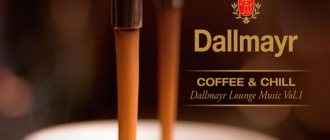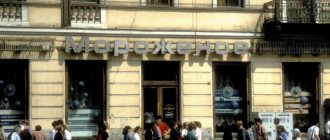Legends of the origin of coffee
Today there is no clear truth about the origin of coffee, we know that the origins of the homeland lie in Ethiopia, and there are several versions of its discovery, but there is one that I want to retell, about the shepherd Kaldi. It sends us back to the middle of the 9th century, where we first learned about the miracle of berries that give an unprecedented supply of vigor. At first, it was not people who recognized the remarkable effect, but goats, who turned out to be more inquisitive, and their shepherd, whose name was Kaldi, noticed the consequences. He noticed that after eating the berries, his goats became cheerful and began to jump wildly. Then he took the berries to the local monastery, where the monks tried them, and, having convinced themselves of the effect, began to use this decoction so as not to fall asleep during long night services.
There is also a well-known fact that during this period one of the African tribes used coffee berries with fat as an energy food, which adds credibility to this legend.
Legal issues
Register your business initially. To open a mini coffee shop, it is enough to create an individual entrepreneur. During the registration process, select OKVED codes. Suitable:
- 47.25.2 - retail sale of non-alcoholic drinks in specialized stores;
- 47.9 - retail trade outside shops, tents, markets;
- 10.56.21 - activities of a catering establishment with take-out service.
To register an individual entrepreneur, an identity card is required. Additionally, fill out an application and pay a state fee of 800 rubles. The process of registering as an entrepreneur takes 3 working days. You will then be provided with a certificate and recording sheet. Additionally, you need to obtain a TIN and an extract from the Unified State Register of Entrepreneurs.
Then select a tax system. The best variety is considered to be fuel injection pump. Next, obtain permits. From the point of view of the law, establishments are classified as public catering. Comply with the requirements for a cafe. To obtain permission, contact Rospotrebnadzor. You will need to provide the following documents:
- papers confirming registration as an individual entrepreneur;
- premises rental agreement or title documentation;
- conclusion of SES and health records of workers;
- agreement with service organizations;
- permitting documentation;
- sanitary passport of the facility and list of goods sold;
- documented details of the company, a conclusion from the Federal Tax Service on registration of the cash register;
To clarify the list, contact Rospotrebnadzor. Representatives of the organization will advise you.
Origins of cultural coffee consumption
What they didn’t do with coffee: they used it in medicine as a medicinal plant, soaked it in cold water for coffee decoctions, mixed it into food with fat, but they started frying and grinding only in the 13th century, at least the first mentions date back to this time . During that period, with the growing influence of Islam in the east, many began to follow Muhammad’s ban on wine and other alcohol, and coffee became an excellent alternative, which would later be called “Arabian wine.” By the way, the Arabian Peninsula gave Arabica coffee its legendary name.
The first records where coffee is mentioned
The earliest mention of coffee, noted in writing by the coffee trader Philippe Sylvestre Dufour, is a reference to the work of a 10th century AD Persian physician. Muhammad ibn Zakariya al-Razi, known as the Razi of the West (Persian polymath, physician, alchemist, philosopher and important figure in the history of medicine). But more definite information about the preparation of a drink from roasted coffee berries dates back several centuries later.
One of the most important records on coffee was made by Abd al-Qadir al-Jaziri, who in 1587 wrote a work tracing the history and legal disputes about coffee entitled Umdat al-safwa fi hill al-Kahwa عمدة الصفوة في حل القهوة.” He reported that Sheikh Jamal al-Din al-Dhabhani (d. 1470), Mufti of Aden, was the first to adopt coffee (around 1454).
Coffee was also noted in Aleppo by the German botanist Leonhard Rauwolf, the first European to mention it in 1573.
Mocha coffee beans from Yemen
The origins of coffee as a business
The Muslims quickly realized that coffee would become an important export commodity and took control of it, which remained with them for 300 years. They took maximum measures to remain a monopoly: they strictly protected coffee plantations and prohibited visiting them, did not allow the export of coffee trees, and when exporting green raw materials, they scalded it in boiling water or partially fried it. Arabia became the only place in the world where coffee could be bought, and Turkey by the 15th century became the world's main distributor, conquering the markets of Persia, Yemen, Syria, Egypt, Greece, and by the 16th century it was already supplying coffee to Italy. By the way, the appearance of coffee in Italy was controversial; Catholics believed that it was the drink of the devil and petitioned Pope Clement to ban it. The pope wanted to approve the petition, but first try what he was going to ban. Having taken a sip, he immediately christened it, saying that the drink was too good to be drunk only by the Turks. So coffee was approved in Christianity.
Coffee growing countries
The drink got its name in the 17th century. Today, the leading country in the world in its production is Brazil. The area of coffee plantations in this country is very large, so it is compared with the area of the whole of Europe. Second and third places in the top three coffee exporters are shared by Colombia and Ecuador. It is also grown throughout Southeast Asia, Central Africa, South and Central America.
Colombian coffee is a high-grade Arabica coffee, which is especially valued in Italy, a country of coffee lovers and true connoisseurs. Coffee from Colombia is more expensive and of higher quality than from Brazil.
The main producer in Asia is Vietnam. In this country, the Robusta variety is preferred over Arabica. Coffee made from this variety of beans has a milder taste.
The first coffee shop in the world and its followers
The first coffee shop in the world opened in 1475 in Constantinople, now the capital of Turkey - Istanbul. The Turks have made a significant contribution to the development of world coffee culture, including consumption, because until now, Turkish coffee is one of the most popular ways of brewing at home.
At the beginning of the 16th century, the door to Europe opened for coffee, and by 1670 coffee houses had appeared in almost every major city, and European countries adapted this phenomenon into culture in different ways:
- In England, coffee shops became a place where pressing issues of the day were discussed, a kind of public forum; they were also called “penny universities,” since anyone with one penny could buy a cup of coffee and join the discussion. Women were not allowed into these coffee shops, which was the beginning of protests, since men spent a lot of time in them. The protests were unsuccessful, and by the end of the 16th century there were about 300 coffee houses in London.
- In France, on the contrary, coffee culture took a different path, these were places where men and women met, there was a rich interior around them, and musicians played. It was here that coffee with milk, which the French called café au lait, first became popular.
- In Italy, the first coffee shop appeared in 1647, in Venice. It was the Italians who in the 20th century invented the espresso coffee machine, which would become a revolution in preparation and form the basis for everyone’s favorite coffee recipes: cappuccino and latte. By the way, many people believe that coffee itself grows in Italy. This is a misconception, they make good equipment for its preparation, and we will tell you where coffee grows and its current geography in the following articles.
- In America, the first coffee shop opened in Boston in 1670, but Americans drank more tea than coffee. Everything changed in 1773, when the Boston Tea Party occurred, it was a protest against an increase in the tax on tea by England. This was the turning point when Americans abandoned tea in favor of coffee, after which it became the national drink here too.
History of coffee in Russia
The spread of the coffee drink dates back to the reign of Peter I. Having tried Dutch coffee, the emperor introduced the tradition of drinking it at meetings.
Back in 1740, the opening of the coffee house was initiated by Empress Anna Ioannovna. The first Moscow coffee shop “Pechkina” opened in the capital at the end of the 19th century. The bohemian public of that time called it a “reasonable place.”
Today our state is one of the ten countries where the described drink is very actively consumed. Statistics show that 85% of imported products come from the instant drink described.
History of the coffee drink: interesting facts about terminology
In England, the term "coffee" appeared in 1598. The British claim that they borrowed this word from the Dutch word koffie. Europeans say that they borrowed the name of the drink from the Turkish name kahve.
Ethiopians claim that the miraculous grain received its name due to the area where it grew (this is the Kaffa region).
An interesting fact is that Russians pronounce coffee (“coffee”) in the masculine gender. It has been this way since the time of Peter the Great.
As you can see, the history of coffee creation contains many secrets, as well as heated debates. It reflects years of tragic events and a period of intense interest in this drink. But be that as it may, the global popularity of coffee has been maintained for several centuries. And this is not surprising, because the magnificent taste and amazing smell of the drink excite the mind and remind us of the bohemian life of aristocrats.
Loss of monopoly on coffee production
The Arabs and Turks had a monopoly on coffee production for a long time, but everything did not last forever, especially since there was one European country that perfectly mastered shipbuilding and traded with the whole world. Once, she already managed to bypass the Turks in the lucrative spice trade by finding sea routes that passed through territories not subject to Turkey. These were the Dutch, and they were also interested in the coffee trade.
At the end of the 17th century, an event occurred that changed coffee history: a ship from Amsterdam arrived at the port of Mocha, from which tons of green coffee had been shipped for 300 years. There were sailors on the ship who were able to buy a live coffee tree from the farmer. Having carried it secretly onto the ship, they did not yet fully realize what they had done, because this was the starting point in the loss of the monopoly on coffee production.
The expansion of this stolen coffee tree began, first spreading to the Dutch colonies in Indonesia, then the French in the Caribbean, and then overtook Brazil, which would later become the largest coffee producer in the world.
How to select point staff
To make your mini-coffee shop work, hire staff. The barista prepares the coffee. You'll save money if you start making your own drinks. Later, hire a dedicated person to handle customer service. You will be left with the work of documents, accounting, reporting, and drawing up contracts with suppliers.
Test your barista's knowledge. A person who understands the types of drinks and their compositions is suitable. Sales skills, politeness, and accuracy will bring benefits. Check for a health certificate. It is impossible to work in catering establishments without it. The store will be closed immediately.
If you hire an employee, set separate wages. It motivates you to work better and protects you from the risk of food theft. Finding the perfect candidate will take time. Business is characterized by turnover. Be patient.
Coffee realities today
Undoubtedly, the history of coffee continues, and a lot has changed since it was opened to the world: a hobby has grown into a serious business, engineers have invented cool equipment for roasting and preparation, scientists have created instant coffee and decaffeinated coffee, industry professionals find new ways every year. brewing, and restaurateurs are opening new formats of coffee shops. Today it is difficult to imagine a world without coffee, and for many people their normal day would be without a cup of the invigorating drink.
In Russia, coffee consumption is growing every year, local roasters are opening, which allows many to drink fresh product, and in principle, the market is shifting towards freshly roasted coffee, as an alternative to instant or imported coffee. Affordable methods of brewing coffee at home are appearing, people are beginning to understand that for a tasty cup you don’t need an expensive coffee machine, but rather a simple French press or simply brew it in a cup. Of course, in terms of coffee consumption per capita, we are inferior to many Western countries, led by Finland, where each resident drinks about 13 kilograms annually. But we know that nothing lasts forever, because once upon a time only goats could afford to enjoy coffee.
Selection of location and equipment
The success of a coffee to-go business depends on location. Trading is based on the method of spontaneous sales. The customer sees the offer and buys the product. The purchase is not planned in advance. Choose a location with high foot traffic. Consider the presence of target audience nearby. Suitable places are:
- stops and stations;
- parks and squares;
- pedestrian areas;
- airport, bus, and railway stations;
- areas near technical schools and universities;
- areas near and inside shopping centers and business centers.
High street traffic is not an indicator of possible income. It is necessary that many representatives of the target audience be present in the stream.
The most profitable places are considered to be areas near large well-known universities. However, business is seasonal. From September to May, sales increase significantly, but in the summer there is a serious decrease in profits due to the holidays. Students love coffee and drink it often, but the audience is price sensitive. If there are competitors nearby offering a lower quality product, but much cheaper, this will cause a decline in sales.
Place a coffee island in the business center. There is less traffic here, but people are interested in buying coffee. The audience's purchasing power is higher. Clients working in business centers do not skimp on coffee and snacks. The average check in the business center is higher. Find and rent a location near or inside a business center. Both methods have pros and cons. In the first case, coffee is purchased by business center employees and people simply passing by. If you place the point inside, clients are eliminated. However, people who don’t leave the office for lunch will eagerly take advantage of this exclusive offer.
Agree with the managers of the company in charge of the task. Often business center owners who specialize in renting out office space do not know the nuances of cooperation with coffee shops. The company does not know the needs of entrepreneurs. Increased rates apply. Sometimes serious problems arise - a failure in the high voltage supply, water supply or drainage.
If you create a mini-coffee shop near a metro station or stop, get ready for increased rent. The premises are rented out at the highest price. Finding a good deal is difficult. Let people see the point of sale. If you place a mini-coffee shop around the corner, this will reduce the advantages of being near a bus stop.
Choose pedestrian areas. There are many coffee shops here, but even dense neighborhoods are often profitable. People have high purchasing power. Large and mini coffee shops are located here. However, setting up a kiosk can be problematic due to local government restrictions. In some cities, non-stationary retail facilities are located in standard structures. They are approved by the administration, so deviations from the standard are unacceptable. Violation is punishable by a fine. The kiosks are not heated. In winter, the barista will freeze. There will be a lot of turnover.
Renting space in a shopping center is also profitable, but much depends on the popularity of the place. Shopping centers position themselves both as hypermarkets and as large premises with individual clients. When choosing a site, evaluate the presence of the target audience.
Placement at the station guarantees the presence of a target audience and high traffic volume. But you will face high competition. Finding a place to rent is problematic. Station visitors have low purchasing power. They go on a trip or return home and plan to spend the money on something else.
People buy cheap coffee. There is no money for a quality drink. City officials are building fences near train stations, creating security rings. Getting into the territory becomes more difficult. Pedestrians who do not plan to travel are forced to bypass train stations due to barriers. As a result, companies lose money.
It is unrealistic to open your own point at the airport at the initial stage. Property owners hold competitions and tenders for tenants. The rent for the premises is huge. It is inconvenient for staff to get to work. Therefore, large companies are represented at airports. They place points to maintain an image.
Choose premises after receiving individual entrepreneur status or opening a legal entity, but before obtaining permits. It will be provided after an inspection of the retail premises. Permission is granted only for areas that meet sanitary standards.
Coffee – amulet and talisman
Enchanted bitter seeds are reliable protection for a newborn child, they believe in Uganda.
Uganda is the country that founded one interesting belief. Residents of the country believe that coffee berries can protect against the evil eye, damage, and ill-wishers. The main thing in the amulet is to combine the components correctly. In addition to coffee, spices and sweet herbs are used. Bitter grains are mixed with other ingredients, sewn into small linen bags, and dried for several weeks in direct sunlight. Fragrant amulets hung around the house are reliable protection that applies to all residents.
Coffee berries are also used to make amulets for newborns. In Uganda, it is believed that a born baby does not have a patron, so parents have to take on the role of his protector from ill-wishers. Enchanted bitter seeds are a reliable shield for a child, protecting him from the evil eye.
Appearance in Latin America
In 1714, the mayor of Amsterdam presented the French King Louis XIV with a coffee tree seedling. The king ordered it to be planted in the Royal Botanical Garden in Paris. In 1723, a young naval officer, Gabriel de Clue, received a sapling of the royal coffee tree. Despite a difficult voyage - terrible weather, a saboteur trying to destroy the plant, and a pirate attack - the officer managed to transport the coffee tree safely to Martinique (Antilles in the Caribbean).
The planted tree blossomed, and over the next 50 years, about 18 million coffee trees grew on the island. A seedling exported from France became the progenitor of all coffee trees on the Caribbean island, South and Central America.
Brazilian coffee owes its existence to Francis de Mello Paletta, who was sent by the emperor to French Guiana to buy beans. The French did not want to share, but the wife of the French ruler, enchanted by Francis, gave him a huge bouquet of flowers before he sailed from the island. Hidden in the flowers were enough beans to begin cultivating coffee.
Missionaries and travelers, traders and colonists continued to bring coffee beans to new lands. So, trees were planted all over the world. By the end of the 18th century, coffee had become one of the most profitable agricultural crops for export.
Advantages and disadvantages of a takeaway business
Business comes with pros and cons. The advantages are:
- Efficiency. If you approach the development of the company correctly, it will bring a lot of profit.
- Minimum starting investment. To start your own business, you don’t need to buy a lot of equipment, hire staff or rent a large space. At the start, the entrepreneur takes care of the clients.
- High demand. Young people and working people love takeaway coffee.
- Mobility. Mobile stalls are easy to move to places where the target audience gathers.
- High speed of business creation. It will take less than a month to launch the campaign.
- Opportunity for development. If business is booming, create an additional point.
According to forecasts, the demand for coffee to go will not subside in the next 10 years.
However, there are also disadvantages. You will face a lot of competition. Designing catering establishments is difficult.
HOW MUCH DOES IT COST TO OPEN A “COFFEE TO GO” POINT?
To start a small coffee shop from scratch, you will need minimal investments, depending on the location, the cost of the selected equipment, the preparation of marketing materials and signage, which will make up the main pool of expenses. There are options on how you can save your budget and open a coffee shop from scratch with minimal investment, which we will discuss later.
In general, you need to be prepared for an initial investment: from 300 thousand to 1 million rubles. depending on the city of opening and other factors.
Let's look at our example of opening a “coffee to go” island in a business center:
- To open a coffee island from scratch, you need to purchase the island itself (with a display case and equipment) And this is the most impressive amount in the budget. You can buy a used one, which will cost several times less. Or choose a different format, for example, a room with minimal renovation costs + separately purchase the equipment you need at the start (refrigerator, microwave, juicer, grill, blender, etc.).
- Good professional coffee machines start from 120,000 to 180,000 rubles. Therefore, at the start, it is wiser to rent a coffee machine and then purchase it later.
- Consumables and products for the first 2 weeks (coffee beans, milk and cream, sugar, syrups, spices, disposable cups and lids, napkins, straws - we recommend not purchasing plastic ones, but switching to more environmentally friendly raw materials, wooden spoons, bottled water). In the future, try to calculate the volume of production based on the average number of drinks sold and do not purchase more than is necessary for your specific coffee-to-go outlet.
- Opening a takeaway coffee shop from scratch without hiring a designer is difficult. Don’t forget that you will need to spend time and money on your own to develop a corporate design not only for advertising products, but also for the interior.
- Sign (if necessary)
In addition to “consumables”, calculate the monthly costs of maintaining a “coffee to go” outlet:
- Renting premises
- Communal expenses
- Barista salary (~2000 rub/day)
Please pay attention! All figures given are approximate and each businessman must independently calculate costs in accordance with the initial data. The cost of opening a similar point somewhere in the region or capital will vary greatly.
Opening a coffee-to-go business as a franchise greatly simplifies this issue. Now all partners on the market provide their proven business model with information by city. If necessary, they adjust the business model based on the rental rate of a particular premises and other criteria. And this is 50% success.
As for net profit, as a rule, on average it ranges from 100,000 to 180,000 rubles.
Is it harmful to drink coffee?
The debate about how harmful coffee is and how many cups a day you can drink continues. Caffeine does increase blood pressure and also has mild diuretic properties, so to avoid dehydration, you should drink a glass of water after a cup of coffee. It is also believed that if you drink more than half a liter of coffee a day, there is a risk of osteoporosis, so avid coffee drinkers should take calcium.
However, coffee has a number of beneficial properties, such as improving attention and mental alertness. It is believed that coffee can also reduce the risk of Parkinson's and Alzheimer's disease. In any case, as with other products, it is important to know a sense of proportion and monitor the body’s reaction.
Photos: cover - Ksenia Kolesnikova, 1 - nimon_t - stock.adobe.com, 2 - bonga1965 - stock.adobe.com, 3 - PixieMe - stock.adobe.com, 4 - anastasianess - stock.adobe.com, 5 - Nizoli - stock.adobe.com
About processing coffee beans
Do you get confused when you hear “washed Columbia”? It's about the way coffee is processed. Now we'll explain everything. The fruits have been collected, now we need to somehow extract coffee beans from them. There are two technologies for processing coffee - washed (in English “washed”) and natural (denoted as “natural” or “dry”). The way the grain is processed affects the taste and aroma of the final product.
The natural or dry method involves drying the berries directly on the ground. This is often done on concrete slabs. The highlight of the method is this: after long contact with the sweet berry, the grain acquires density, pronounced sweetness, and rich taste. In the taste of coffee processed using natural technology, you can hear caramel, nutty, chocolate shades, even notes of baking. However, drying it this way sometimes results in a slight earthy flavor, which isn't everyone's cup of tea.
Washed processing is usually rated higher. With this method, the grains are first peeled and then loaded into a tank of water. The coffee bean is kept in water until the gluten is separated. Washed coffee has a pronounced acidity and is characterized by notes of berries and citrus in its taste. The drink is not as rich as from naturally dried beans, but it is softer. Here, of course, whatever suits your tastes best.
Fun fact for dessert. While you were reading our text, you didn’t think about it, what about the berries, are they really not used in any way? Are used. Usually the fruit pulp is used as fertilizer. But sometimes an original drink, cascara, is prepared from dried berries. Cascara tastes nothing like coffee, more like compote or fruit drink. Moreover, it also contains caffeine.
You can appreciate the taste of cascara yourself if you order this drink in our online store. In addition to cascara, the Bean&Roast catalog includes coffee from all famous regions. Both processing methods are presented – washed and natural.
How is specialty coffee different from regular coffee?
Specialty coffee is Arabica coffee beans of the highest category. Such coffee is rated on a 100-point Q system even at the green bean stage. It can be considered as such only if its score is not lower than 80 points. The best varieties are rated at 90 points or more. To evaluate coffee, there are Specialty Coffee Associations (SCA) - as a rule, each country of origin has its own association, but the two largest are in America and Europe. Experts evaluate not only the quality of the grain itself, but also study its aroma, sourness, sweetness, aftertaste and balance.
On specialty coffee packages you can find the most detailed information about a specific bean: as a rule, the manufacturer indicates the processing process, variety, harvest date, height of growth, region and even farm. The price of specialty coffee is higher than regular coffee, firstly, because it is selected grain of the highest category, and secondly, there is much less such grain, it is not produced on an industrial scale, therefore, a pack of such coffee costs more. For comparison: 500 grams of Lavazza coffee in a supermarket costs about 500–600 rubles, and a 250 gram pack of specialty coffee will cost between 900–1,300 rubles in Doubleby coffee shops.
Nikolay Chistyakov
co-owner and roaster of Camera Obscura Coffee
Professionals use a 100-point assessment of grain quality and potential, but it is not universal. It allows an individual taster to evaluate coffee before purchasing and compare the ratings of several coffees if the task is to choose from a large number of lots. The assessment is made subjectively and in a given context. They usually say: “Last time this coffee scored 86 points for me.” This does not mean that the same 86 points are in your cup now. This means that the grain has good potential. Some roasters put the score on the packaging, but it's weird, they don't seem to understand the score. Good coffee scores from 80 points. We all try not to go below 85. Highly rated coffee is brought to Russia, but it is very expensive coffee. It is rarely prepared for mere mortals, but is usually used at championships and drunk by staff for cultural enrichment.











